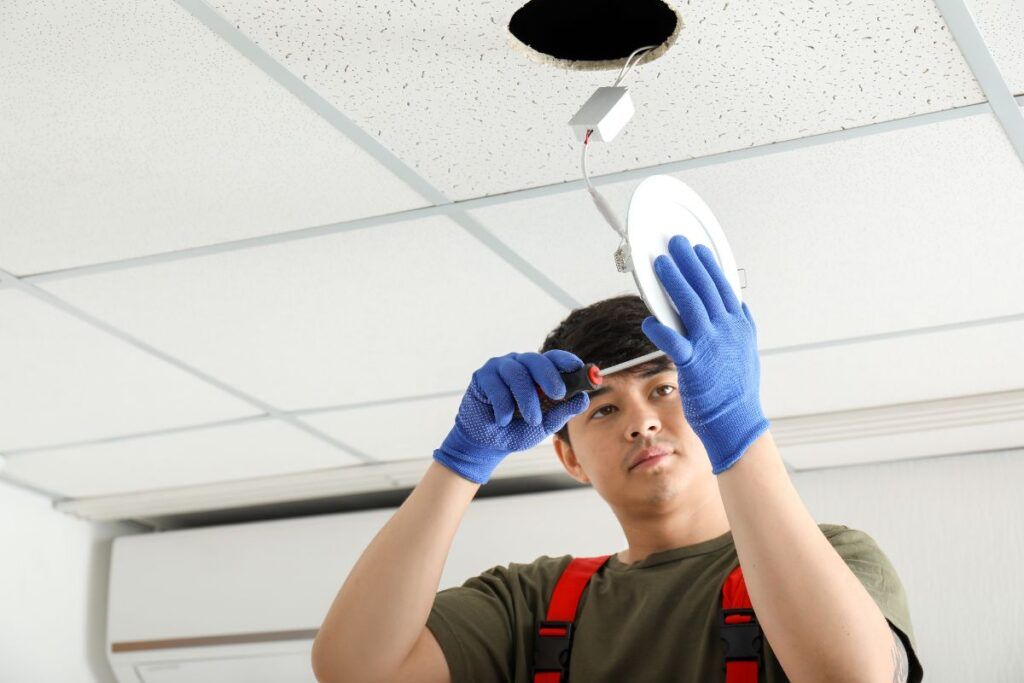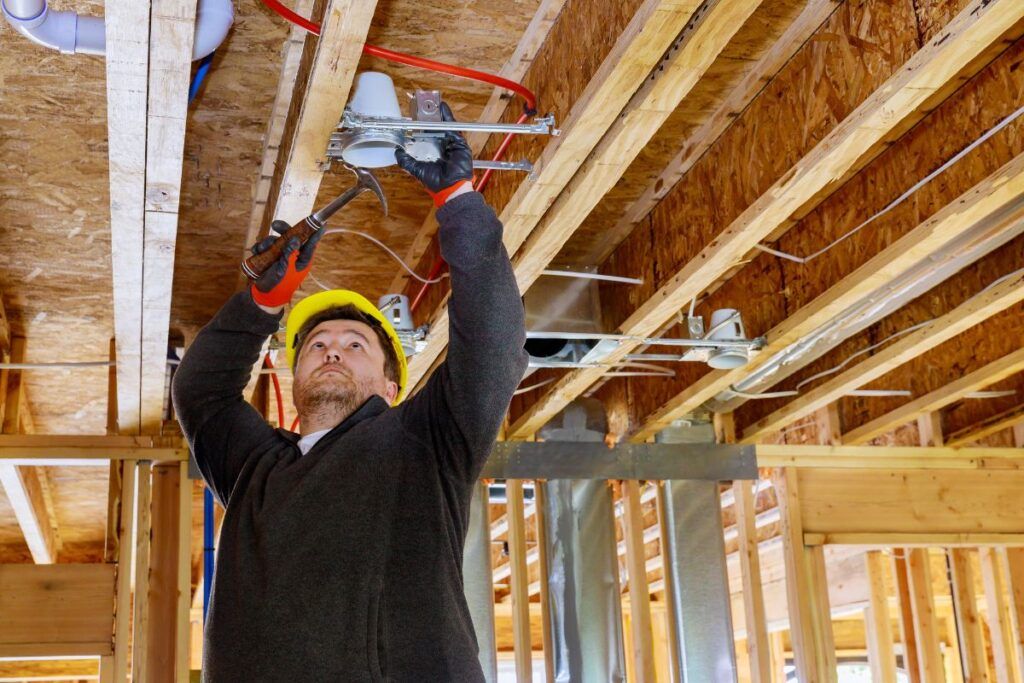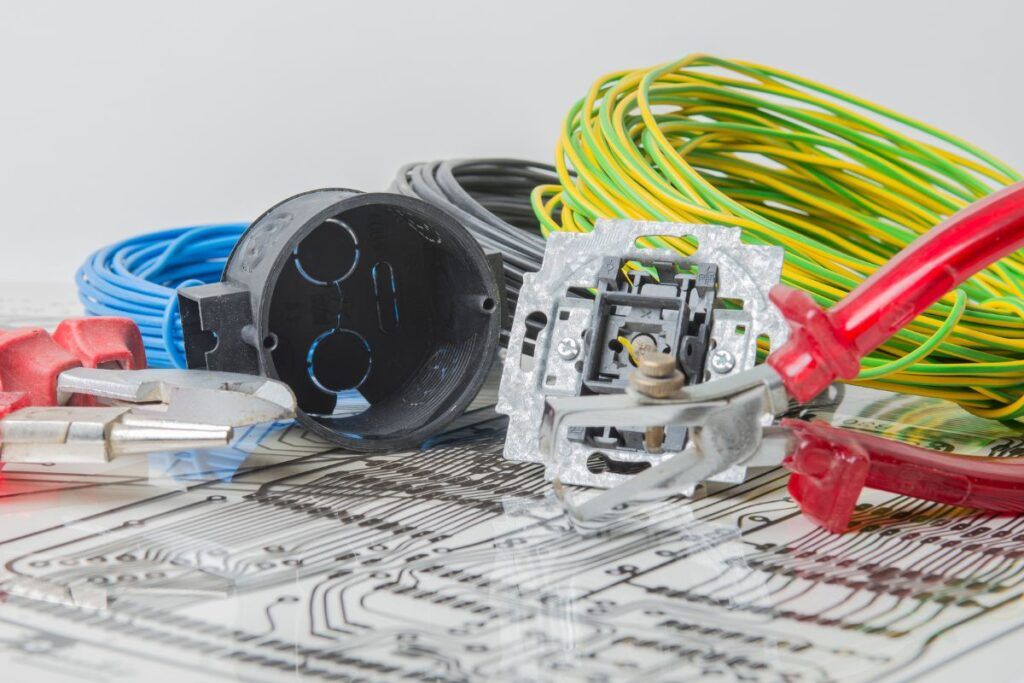It is intriguing to see multiple lights turning on with one switch. But is it possible? Should you use only one light for one switch, or can you use multiple lights with one switch? That is what we will share today.
There is no limit to how many lights you can add to a circuit. However, the maximum rating of the circuit determines how much light the system can handle without overloading. Most traditional homes have a 15 Amps switch that can handle up to 1500 Watts, so you can run 30 lights of 50 watts each.
Safety is the main priority, no matter how many lights you run with one switch. This guide will find the number of lights used on one switch depending on the light types, the switch feature, and the breaker load.

Check out our list of top-handpicked products for all your electrical, appliance, and HVAC system needs to keep your home running smoothly.
This post includes some affiliate links.How many lights can I put on one switch?
As I said, there is no exact result on the number of lights to be put for one switch.
The number of lights depends on the load the light fixtures will draw, the wire gauges, the feature of the switch, and the breaker.
Generally, the breaker decides the amount of light to put on one switch.
The breaker has a limit to carrying the load.
If the load exceeds, the breaker will trip, and the switch may get damaged.
Along with that, all the lights will stop working.
Some lights, like lamps and ceiling fan lights, use bulbs and draw more power than LED bulbs.
Most of the circuits in our houses allow 15-20 amps for lights.
In that case, you can use 1,400 to 2,400 wattages of lights in one switch.
You can use 23 to 40 bulbs or 280 to 480 LED bulbs with 5 watts.
Also read:
How many fluorescent lights are on one switch?
You can easily put up 8 lights on one switch.
If the wattage of each light is 40 watts and you have 20 amp circuits, you can put up 40 light bulbs on one switch.
However, these many lights are needed only in big buildings rather than houses.
If you want to have lights and outlets in one circuit, you can put 8 lights only on one switch.
Each outlet or light will draw 1.5 amps of current.
So, you are allowed to put only 8 lights and outlets in 15 amp and 10 lights and outlets in 20 amp circuits.
To join the lights with one switch, you cannot daisy-chain them.
But, you have to wire a bunch of ballasts parallelly and not in series.
There is no limit to putting the ballast quantities as long as you are within the rated amperage of the circuit.
How many LED lights can you put on one dimmer switch?
Regular switches have two switch levels – on and off.
The dimmer switches are quite fancy.
Dimmer switches also allow you to go for high or low beam lights.
If each LED light has 100 watts, you can install only 6 six lights on a 600 watts dimmer switch.
Like the regular switches, the dimmer switches also have a limit.
The normal dimmer wattage ratings are 150, 300, 600, and 1000 watts.
If you exceed the limit, the dimmer will break and stop working.
It will also start to flicker and create noises.
The current load will be too much for the switch to handle.
How many recessed lights can you put on one switch?

Recessed lights give your house a different and bright look.
One fixture with recessed lights is insufficient for one room to have lights. So, you will require more than one light.
The number of light fixtures to install in one switch depends on the space, the size and width of the canister, and the wattage.
If you have a 15 amp breaker, you can install 30 lights, each carrying 60 watts of load.
How many LED lights can you put on one switch?
The actual limit of LED lights for one switch is still being determined.
Several factors require consideration when deciding the number of lights.
If you have installed multiple lights in one switch, you need to know whether the circuit has enough power to carry the lights.
A standard incandescent light bulb has 60 watts, and a single LED has only 10 watts.
So, you can use nearly 180 LED lights with one switch.
If your circuit can handle such watts, you can run them with one switch.
CFL and LED bulbs
Both the bulbs are different from the regular bulbs.
Both can give less amount of light in less electricity, i.e., 10 watts or even less.
So, if you have a 15 amp switch circuit, you can install 180 LED and CFL lights in one switch.
Factors to consider while adding multiple lights on one switch
Before adding multiple lights to one switch, know the power carrying capacity of the light bulbs, the circuit’s amperage, and the wires’ current carrying capacity.
Below are some factors you must consider while adding lights to one switch.
Also read: Can You Have Outlets And Lights On The Same Circuit?
Breaker switch and wall switch ratings

If you have a 15 amp circuit, you will need a 14 gauge wire.
For a 20 amp circuit, you require a 12 gauge wire.
You must ensure the wall switch ratings and the voltage rating.
For example, 15 amp wall switches are rated only for 120 volts.
A 15 amp switch can carry 1,400 watts, and a 20 amp switch will carry 2,400 watts.
So, if you have 2 bulbs with 60 watts each, you can install 11 bulbs on the 15 amp circuit and 20 bulbs on one switch in a 20 amp circuit.
If you wish to put recessed lights, generally, you can put 30 lights with 60 watts.
The LED lights are meant for 20 amps with 240 VAC.
So, you can use 180 or more LED and CFL bulbs on one switch in a 15 amp circuit.
Series circuits and fuses
Series circuit lights, like the Christmas lights, use fuses to power themselves.
If the current flowing and feeding the lights is very high, the wire cable will be unable to handle it.
As a result, the bulbs will blow.
Fuses are weak points in the circuit.
They give up when the connection warms up too much.
However, this giving up feature of the fuses prevent fire hazards or bulb explosion if the wire becomes too hot to handle.
You need to know the wattage of lights for putting them up in one switch.
Most homes have 240 volts supply.
Maximum circuits have either 220 volts or 120 volts.
To know the number of lights in one switch, you must first divide the number of watts of the light bulbs combined by the voltage given to the circuit.
If your light bulbs contain 60 watts each, divide it by the voltage, e.g., 240 volts. It equals 0.25 amps.
Christmas lights have multiple 5-watt lights with 5 amp fuse and can support 240 bulbs in a 240 volt supply.
You can also calculate by multiplying the supply voltage with fuse amps.
If a 5 amp fuse can protect your light circuit, multiply it by the voltage, e.g., 240V. You will get 1,200 watts of bulbs to connect.
How can I wire multiple lights with one switch?

There are two ways to connect multiple light fixtures to one switch:
- Daisy-chaining
- Home-run switch wiring
Daisy-chaining fixtures
In daisy chain wiring, you can wire the light parallelly instead of in series, which is common in Christmas tree lights.
Daisy-chain allows you to use other lights when one light goes off.
All you need to remember is the color coding:
- White wires are neutral wires
- Black wires are hot
- Bare wire is the ground wire
You require a separate cable wire to run it between each light fixture.
You need to join the black cables with the other two back wires and do the same with the ground and white wires.
You will also need larger caps as you will have three wires instead of two – one connecting the load and fixture and the other leading to other fixtures.
You can add multiple fixtures as long as you remain within the breaker’s rating.
Home-run switch wiring
Here, you wire each light fixture directly to that one switch.
The benefit of this procedure is that you can disconnect the light fixture individually whenever necessary.
If the light fixtures are harder to access, this method is the best one to connect multiple lights to one switch.
In a home-run switch, each hot wiring running from the breaker should reach directly to the load terminal of the particular switch.
You can do this by pigtail.
In the pigtail method, you use a 6-inch black wire and twist the black wires connected to the fixtures.
After that, screw a wire cap on the split joint.
Use the same process to join the ground wires to the ground terminals.
However, you do not have to pigtail the white wires.
It becomes awkward when you add more fixtures.
You might have to add another electrical box to adjust with so many fixtures.
How do I control multiple lights with multiple switches?

You can also control the lights with multiple switches if you want.
To control the light fixtures with multiple switches, you need to connect the additional light fixtures in parallel with the existing lights.
The first junction box will have two 3-conductor cables from one switch box and a 2-conductor cable extended to another junction box.
Here are the steps to connect them:
- The white wire from the 3-wire conductor on the right side is the hot wire and must be marked by black tape.
- Connect the black-taped wire with the wire nut of the black wire of the 2-wire conductor and the short black pigtail.
- Connect the white wires (without tape) from the left side with the wire nut of the white wire from the 3-conductor cable and the short white pigtail.
- Now, join the black and white pigtails to the light fixture.
- Connect the black and white wires to the light fixture in the last box.
The procedure is very useful for outdoor lights in driveways where you can get one light at the one end of the driveway.
Even staircases are good places to have such settings.
3-way switches should be on each end.
But, 4-way switches do not need such a thing.
You can also connect multiple lights or switch circuits without a branch.
You will need a 4-wire conductor cable, and the blue wire will be the hot wire.
When should I call an electrician?
If you are a layman fixing multiple lights to one or multiple switches, you can call an electrician.
It is more important if there are works related to wires.
Many laypersons connect the wrong wires with the wrong terminals and trip the breaker or switch.
In some states, the NEC (National Electric Code) codes and the local codes do not permit laypersons to deal with electrical wirings.
If your state or locality has rules where naive people are not allowed to do electrical work, you cannot do these settings if you do not call a professional.
They have better knowledge and can do the work in less time and effort.
You will also be able to save money because doing work yourself can destroy some good products.
Final thoughts
There is no limit or the exact number for adding lights to one switch. It completely depends on the rated load of lights and the switch breaker.
If you decide to install, for example, 8 lights, you need to ensure that your circuit can handle the load. The circuit breaker is the main thing. If your breaker can handle the load, so will the switch.
You can choose daisy-chaining or the home-run method to join multiple lights with one switch. You can also control multiple lights with multiple switches if you want.
If you are unsure about doing the job alone, hire a professional. Besides, NEC codes of some states do not allow inexperienced people to do the job.
Data Source: National Electrical Code, NEC Wire Table, Electrical wiring, Home wiring.

